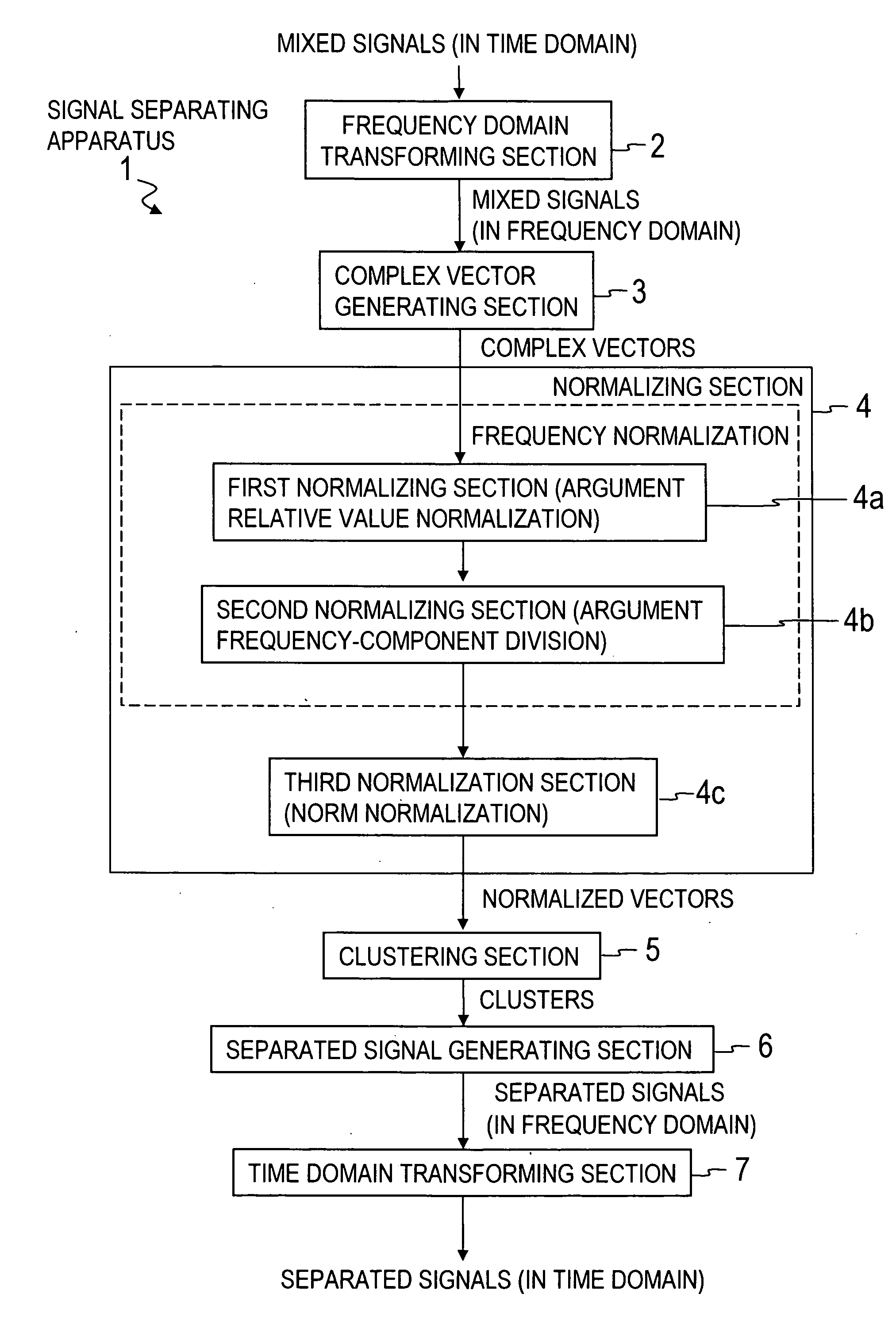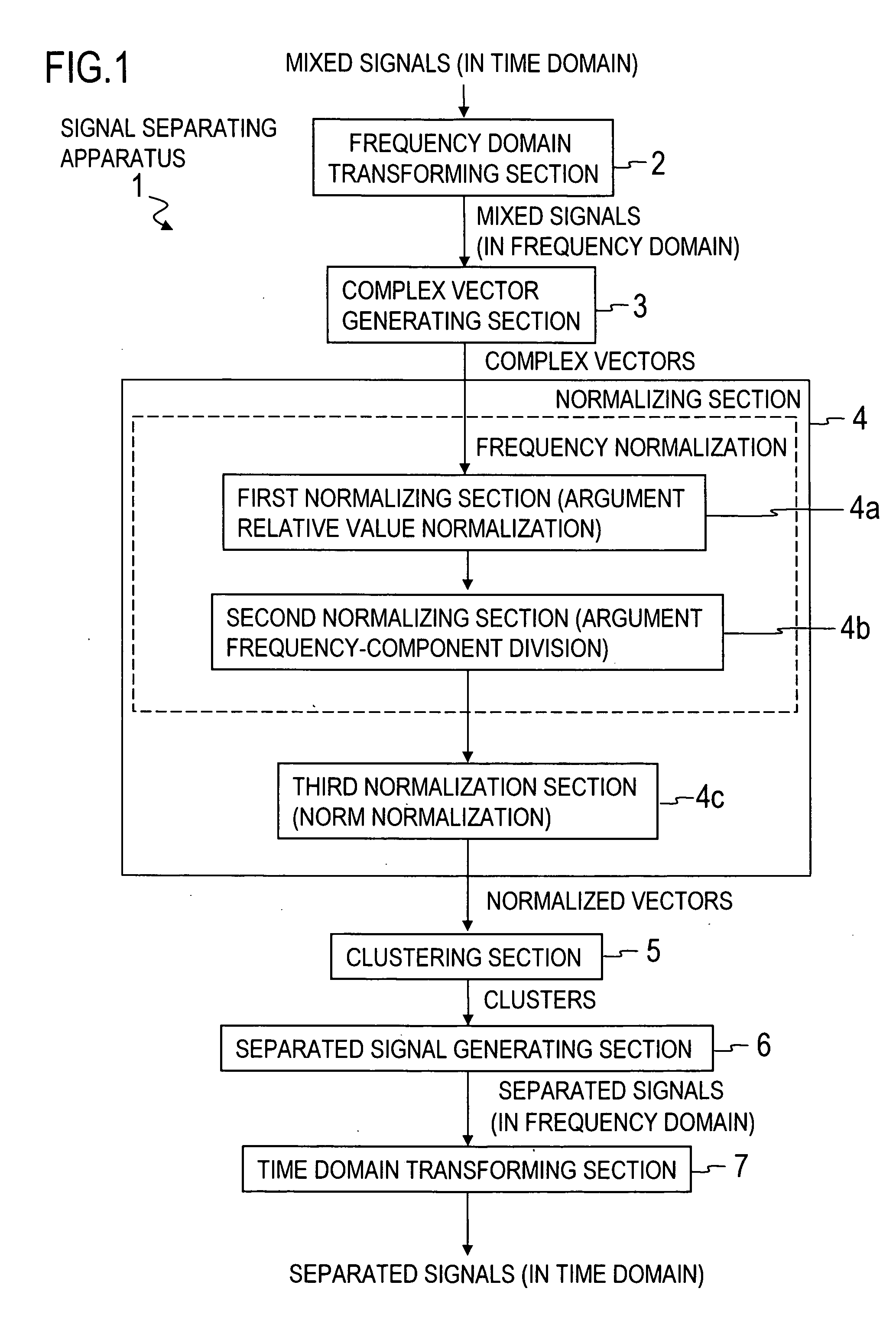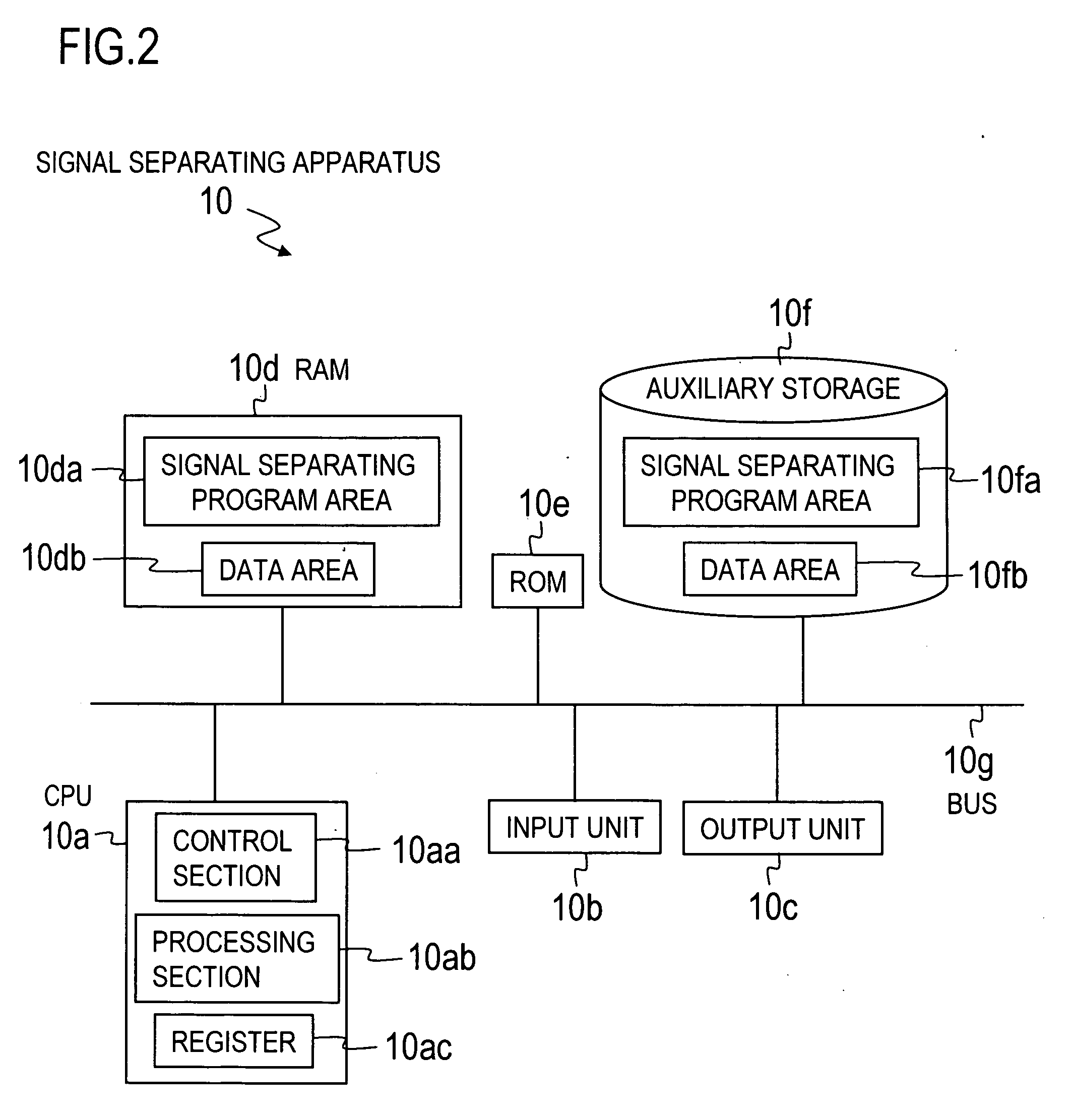Signal Separation Device, Signal Separation Method, Signal Separation Program and Recording Medium
a signal and signal separation technology, applied in the field of signal processing, can solve the problems of complex operations to accurately solve the permutation problem, errors in estimates, and inability to efficiently and simply use signal separation information obtained from signals observed by multiple sensors, etc., to achieve simple and efficient, accurate, and simple and efficient
- Summary
- Abstract
- Description
- Claims
- Application Information
AI Technical Summary
Benefits of technology
Problems solved by technology
Method used
Image
Examples
first embodiment
Example of the First Aspect of the Present Invention
[0105]The first embodiment of the present invention will be described.
[0106]The first embodiment accurately solves the permutation problem in accordance with the principles described above, without needing to obtain precise information about sensor positions beforehand or to perform complicated operations. It should be noted that “basis vectors” described later correspond to the “complex vectors” mentioned above.
[0107]FIG. 2 is a block diagram showing a hardware configuration of a signal separating apparatus 10 according to the first embodiment.
[0108]As shown in FIG. 2, the signal separating apparatus 10 in this example includes a CPU (Central Processing Unit) 10a, an input unit 10b, an output unit 10c, an auxiliary storage device 10f, a RAM (Random Access Memory) 10d, a ROM (Read Only Memory) 10e, and a bus 10g.
[0109]The CPU 10a in this example includes a control section 10aa, a processing section 10ab, and a register 10ac and pe...
second embodiment
Example of the First Aspect of the Invention
[0159]The second embodiment of the present invention will be described below.
[0160]In the first embodiment, the permutation problem has been solved by using information obtained from basis vectors. In the second embodiment, the permutation problem is solved more accurately by combining this information with information about envelopes of separated signals as described in Japanese Patent Application Laid-Open No. 2004-145172 and H. Sawada, R. Mukai, S. Araki, S. Makino, “A Robust and Precise Method for Solving the Permutation Problem of Frequency-Domain Blind Source Separation,” IEEE Trans. Speech and Audio processing, Vol. 12, No. 5, pp. 530-538, September 2004 (hereinafter referred to as the “Reference literatures”). In these literatures, information about the directions of signal sources is used in stead of basis vectors.
[0161]The following description focuses on differences from the first embodiment and description of the same elements ...
third embodiment
Example of the Second Aspect of the Present Invention
[0195]The third embodiment of the present invention will be described below.
[0196]The third embodiment uses the principles described above to extract a target signal from mixed signals in which signals originated from multiple sources are mixed, without having information about the direction of the target signal.
[0197]Like the signal separating apparatus in the first embodiment, a signal separating apparatus of the present embodiment is configured by loading a signal separating program into a computer of well-known von Neumann-type. FIG. 16 is a block diagram illustrating a configuration of a signal separating apparatus 1001 according to the third embodiment.
[0198]As shown in FIG. 16, the signal separating apparatus 1001 has a memory 1100 including memory areas 1101-1114, a frequency domain transforming section 1120, a signal separating section 1130, a target signal selecting section 1140, a time-frequency masking section 1150 (wh...
PUM
 Login to View More
Login to View More Abstract
Description
Claims
Application Information
 Login to View More
Login to View More - R&D
- Intellectual Property
- Life Sciences
- Materials
- Tech Scout
- Unparalleled Data Quality
- Higher Quality Content
- 60% Fewer Hallucinations
Browse by: Latest US Patents, China's latest patents, Technical Efficacy Thesaurus, Application Domain, Technology Topic, Popular Technical Reports.
© 2025 PatSnap. All rights reserved.Legal|Privacy policy|Modern Slavery Act Transparency Statement|Sitemap|About US| Contact US: help@patsnap.com



